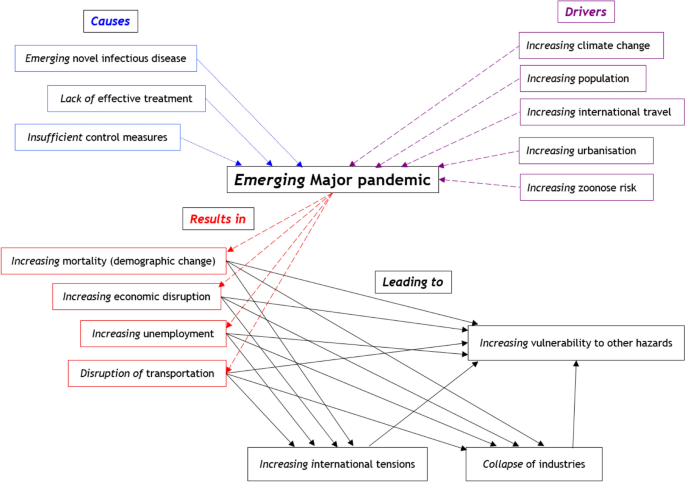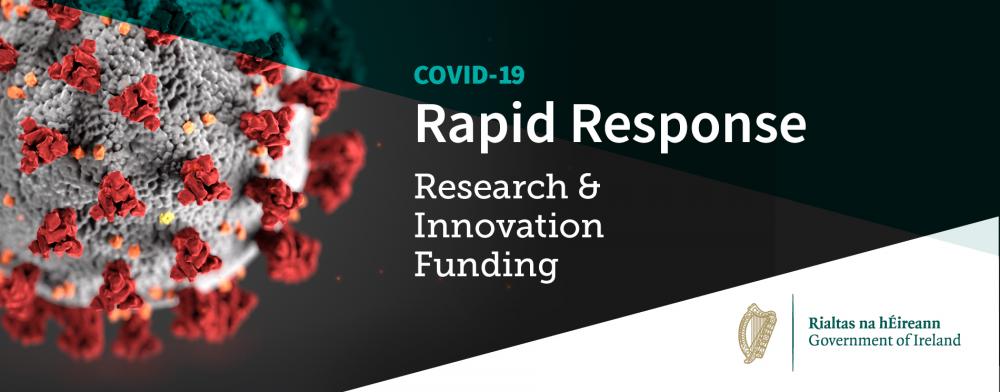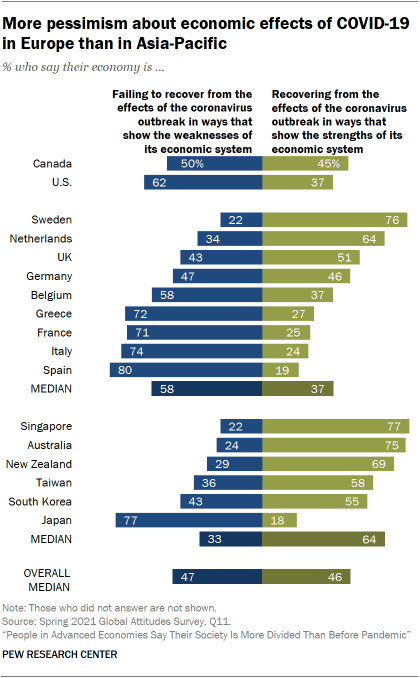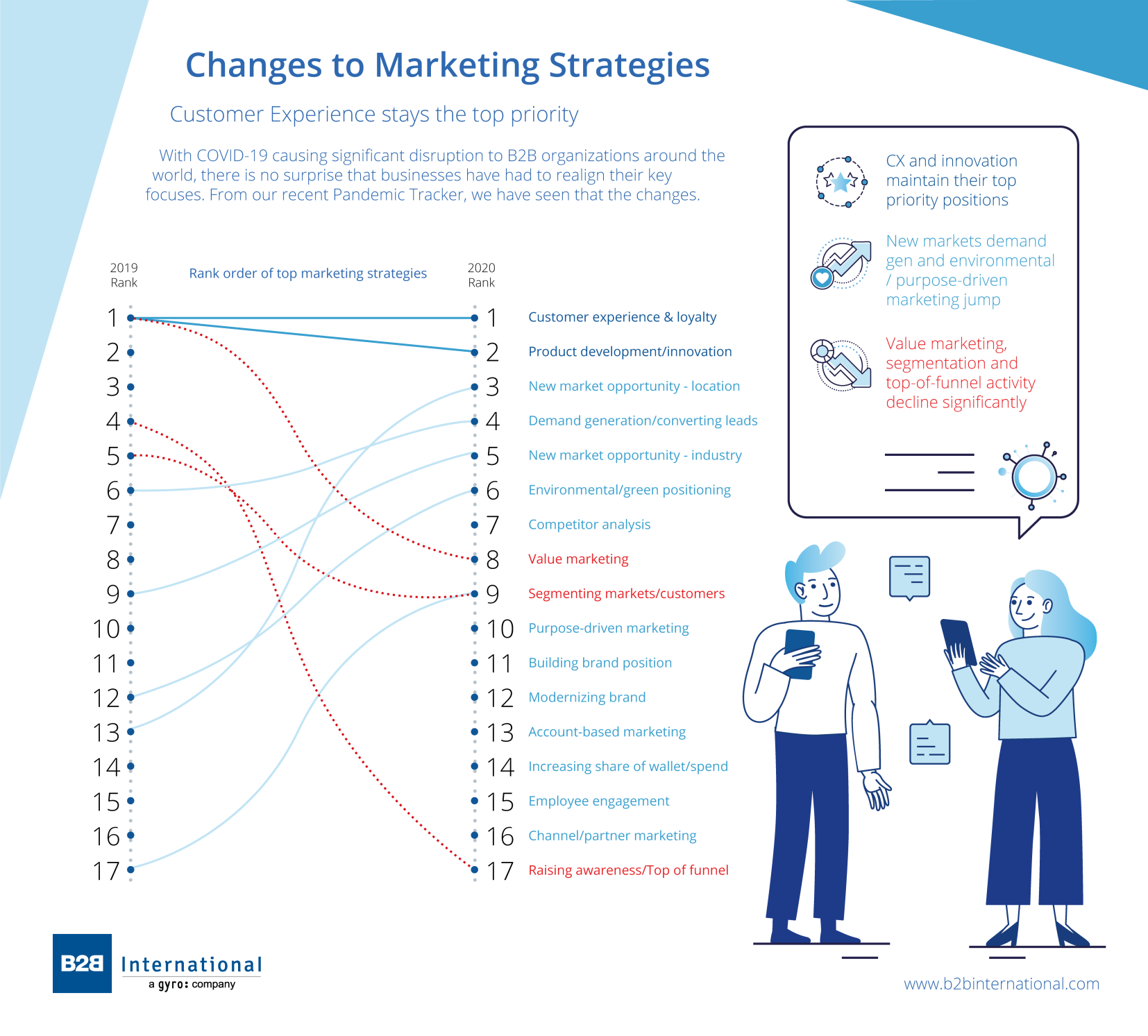Navigating Pandemics: Effective Risk Management Strategies

Unraveling the Complexities of Pandemic Risk Management
The emergence of a pandemic presents a multifaceted challenge that demands a strategic and comprehensive approach to risk management. As organizations grapple with the uncertainties brought about by global health crises, effective pandemic risk management becomes an indispensable tool in navigating the complexities of these unprecedented times.
Understanding the Dynamic Nature of Pandemic Risks
Pandemic risks are inherently dynamic, evolving with the progression of a health crisis. To effectively manage these risks, organizations must first understand the fluid nature of the threat. This involves continuous monitoring of global health data, staying abreast of emerging variants, and anticipating the potential impacts on various aspects of operations.
Proactive Preparedness: A Cornerstone of Risk Management
The old adage “prevention is better than cure” rings particularly true in the realm of pandemic risk management. Proactive preparedness involves establishing robust contingency plans, ensuring a resilient supply chain, and implementing measures to safeguard the health and well-being of employees. A well-prepared organization is better equipped to weather the challenges posed by a pandemic.
Data-Driven Decision-Making in Uncertain Times
In the face of a pandemic, data becomes a powerful ally in risk management. Analyzing epidemiological data, monitoring infection rates, and utilizing predictive modeling aid organizations in making informed decisions. Data-driven insights contribute to the development of effective strategies, ensuring a nimble and adaptive response to evolving circumstances.
Flexibility as a Key Component of Risk Mitigation
The ability to adapt and pivot swiftly is a hallmark of effective pandemic risk management. Organizations must embed flexibility into their operations, allowing for rapid adjustments to changing circumstances. This includes flexible work arrangements, adaptable supply chain strategies, and contingency plans that can be activated promptly in response to emerging risks.
Employee Well-Being as a Priority in Risk Mitigation
Managing pandemic risks extends beyond operational considerations to encompass the well-being of employees. Prioritizing mental health, providing support mechanisms, and fostering a culture of open communication contribute to a resilient workforce. A healthy and supported team is better equipped to navigate the challenges posed by a pandemic.
Supply Chain Resilience in the Face of Disruptions
Pandemics can disrupt supply chains on a global scale. Ensuring supply chain resilience involves diversifying suppliers, maintaining adequate inventory levels, and establishing alternative sourcing strategies. A resilient supply chain mitigates the impact of disruptions, ensuring continuity in operations even in the face of widespread challenges.
Scenario Planning for Contingency Preparedness
Effective pandemic risk management includes scenario planning to anticipate and prepare for a range of potential outcomes. This proactive approach allows organizations to identify vulnerabilities, assess the impact of various scenarios, and implement preemptive measures. Scenario planning enhances the organization’s ability to navigate uncertainties with agility and resilience.
Communication Strategies for Transparency and Assurance
Transparent communication is integral to pandemic risk management. Clear and timely communication fosters trust among employees, stakeholders, and the broader community. Providing regular updates, addressing concerns openly, and ensuring accessibility to accurate information contribute to a cohesive and informed response to the risks posed by a pandemic.
Continuous Evaluation and Learning for Future Preparedness
The culmination of effective pandemic risk management involves continuous evaluation and learning. After navigating a crisis, organizations must reflect on their responses, identify areas for improvement, and integrate lessons learned into future risk management strategies. This iterative process enhances an organization’s overall resilience and preparedness for future pandemics.
To delve deeper into the intricacies of pandemic risk management, visit Pandemic Risk Management. As organizations confront the challenges of global health crises, a proactive and adaptive approach to risk management becomes a cornerstone of resilience. By understanding the dynamic nature of pandemic risks and implementing comprehensive strategies, organizations can not only navigate current crises but also fortify themselves for the uncertainties of the future.
Ensuring Business Continuity Amidst the Pandemic Challenges

Navigating Business Continuity Amidst the Pandemic Challenges
The COVID-19 pandemic has brought unprecedented challenges to businesses worldwide. Ensuring business continuity in the face of such uncertainties has become a top priority. Organizations are adopting strategic measures to adapt, survive, and thrive in this dynamically changing landscape.
Resilience through Remote Work Adoption:
One of the key strategies for business continuity during the pandemic has been the widespread adoption of remote work. Companies quickly transitioned to remote work models, leveraging technology to maintain operations. This shift not only ensured employee safety but also showcased the adaptability of businesses in the face of adversity.
Digital Transformation as a Pillar of Continuity:
Embracing digital transformation has proven to be a critical pillar for business continuity. Companies that invested in technology found themselves better equipped to navigate disruptions. Cloud computing, digital collaboration tools, and e-commerce platforms have played pivotal roles in enabling seamless operations and customer engagement, even in the most challenging times.
Supply Chain Resilience and Diversification:
The pandemic exposed vulnerabilities in global supply chains, prompting businesses to reassess and enhance their supply chain strategies. Building resilience through diversification, local sourcing, and strategic partnerships became essential. This shift aimed to mitigate the impact of disruptions and ensure a steady flow of goods and services.
Financial Planning and Adaptive Budgeting:
Financial stability is fundamental to business continuity. Companies focused on adaptive budgeting, revisiting financial plans, and exploring cost-saving measures. Financial agility allowed businesses to weather the storm, ensuring the availability of resources for essential operations and strategic initiatives.
Crisis Communication and Stakeholder Management:
Effective communication during a crisis is paramount. Businesses prioritized transparent and timely communication with employees, customers, and stakeholders. Managing expectations and demonstrating a commitment to transparency fostered trust and goodwill, essential elements for maintaining business continuity in times of uncertainty.
Business Continuity Pandemic: A Holistic Approach
In the pursuit of business continuity during the pandemic, adopting a holistic approach is imperative. Combining remote work strategies, digital transformation initiatives, supply chain resilience, financial planning, and effective communication creates a comprehensive framework to navigate the challenges posed by the ongoing global crisis.
To explore more insights on Business Continuity during the Pandemic, visit Business Continuity Pandemic for valuable resources and guidance.
Innovation as a Driver of Continuity:
Innovation emerged as a driving force behind business continuity. Companies that embraced innovation found new ways to deliver products and services, often discovering untapped opportunities. Adapting to market shifts and consumer behavior changes became integral to sustaining operations and maintaining relevance.
Employee Well-being and Organizational Culture:
Prioritizing employee well-being and nurturing a resilient organizational culture contributed significantly to business continuity. Companies that invested in supporting their employees’ mental health, providing flexibility, and fostering a sense of belonging witnessed increased productivity and loyalty, further ensuring continuity during challenging times.
Preparing for Future Uncertainties:
As businesses navigate the current challenges, preparing for future uncertainties remains a constant consideration. Scenario planning, risk assessments, and continuous improvement strategies are essential components of building resilience. Proactively addressing potential disruptions positions businesses to respond effectively and ensure continuity in the face of unforeseen challenges.
Conclusion:
Ensuring business continuity during the pandemic requires a multifaceted approach that encompasses remote work, digital transformation, supply chain resilience, financial planning, crisis communication, innovation, employee well-being, and proactive preparation for future uncertainties. By embracing these strategies, businesses can not only survive the current challenges but also thrive in a rapidly changing global landscape.
Innovative Solutions: Navigating the Pandemic Response

Innovative Solutions: Navigating the Pandemic Response
The global pandemic has spurred a wave of innovation as communities, businesses, and governments seek effective responses to unprecedented challenges. From healthcare advancements to technological innovations, a multifaceted approach is shaping the way we navigate and overcome the complexities of the pandemic.
Healthcare Innovations and Medical Breakthroughs:
At the forefront of pandemic response innovation are healthcare advancements and medical breakthroughs. The rapid development and distribution of vaccines stand as a testament to the unprecedented collaboration between pharmaceutical companies, researchers, and governments. Beyond vaccines, innovative treatment methods and diagnostic tools have played a pivotal role in managing and mitigating the impact of the virus.
Pandemic Response Innovation: A Comprehensive Guide
For a comprehensive guide on pandemic response innovation, visit Pandemic Response Innovation for insights and resources.
Technological Solutions for Remote Work:
The shift towards remote work prompted a surge in technological solutions to facilitate seamless collaboration and productivity. Video conferencing platforms, project management tools, and cybersecurity innovations have become essential components of the remote work landscape. This technological adaptation has not only sustained business operations but has also transformed the way teams collaborate globally.
Data Analytics and Predictive Modeling:
Data analytics and predictive modeling have played a crucial role in pandemic response strategies. These tools enable health officials to track the spread of the virus, anticipate hotspots, and allocate resources efficiently. The use of data-driven insights has been instrumental in making informed decisions, optimizing healthcare delivery, and enhancing overall response efforts.
Supply Chain Innovations and Resilience:
The pandemic exposed vulnerabilities in global supply chains, leading to a renewed focus on supply chain innovations and resilience. Businesses have explored decentralized production, digitalization of logistics, and the use of predictive analytics to ensure a steady flow of essential goods. These innovations aim to build more robust and adaptable supply chains capable of withstanding future disruptions.
Educational Technology and E-Learning Platforms:
With disruptions to traditional education models, there has been a surge in educational technology and e-learning platforms. Virtual classrooms, online resources, and interactive learning tools have become integral to remote education. This shift has not only provided continuity in learning but has also opened up new possibilities for accessible and personalized education.
Telehealth and Virtual Healthcare Services:
Telehealth and virtual healthcare services have experienced unprecedented growth during the pandemic. The ability to consult with healthcare professionals remotely has become a critical component of healthcare delivery. From virtual consultations to remote monitoring, these innovations have enhanced accessibility to medical services and improved overall patient care.
Sustainable and Eco-Friendly Innovations:
In response to the pandemic, there has been a growing emphasis on sustainable and eco-friendly innovations. Businesses are adopting environmentally conscious practices, from sustainable packaging to energy-efficient operations. This shift reflects a broader recognition of the interconnectedness between human health, environmental well-being, and overall resilience.
Community-Led Initiatives and Grassroots Innovation:
Communities worldwide have responded to the challenges with grassroots innovation and community-led initiatives. From local makers producing personal protective equipment (PPE) to neighborhood support networks, these initiatives showcase the power of collective action. The sense of community-driven innovation has not only addressed immediate needs but has also fostered a spirit of resilience and solidarity.
Investment in Research and Development:
Governments and private sectors globally have increased their investment in research and development to address current and future health challenges. This commitment to innovation extends beyond the pandemic response to build a foundation for robust healthcare systems, technological advancements, and scientific breakthroughs in the years to come.
Conclusion:
Innovation has been a driving force in navigating the complexities of the pandemic. From healthcare breakthroughs to technological adaptations, supply chain resilience, and community-driven initiatives, the response to the challenges posed by the pandemic has showcased the capacity of human ingenuity. As we continue to face uncertainties, embracing a culture of innovation remains essential in building resilience and shaping a sustainable future.
Analyzing Pandemic Impact: Insights and Strategies

Analyzing Pandemic Impact: Insights and Strategies
The profound effects of the pandemic have necessitated a comprehensive analysis of its impact on various facets of society. In this article, we delve into the critical aspects of pandemic impact analysis, offering insights and strategies to navigate the challenges and pave the way for recovery.
Economic Landscape: Unraveling the Financial Fallout
One of the primary areas demanding attention in pandemic impact analysis is the economic landscape. Lockdowns, business closures, and disruptions to supply chains have led to widespread financial challenges. Analyzing the economic impact helps in identifying sectors most affected, understanding unemployment trends, and formulating strategies for economic recovery.
Healthcare Systems Strain: Assessing the Impact on Public Health
The strain on healthcare systems has been a critical aspect of the pandemic’s impact. An in-depth analysis is crucial for understanding the capacity challenges, resource deficiencies, and lessons learned in managing public health crises. This assessment informs strategies for fortifying healthcare infrastructures and preparedness for future health emergencies.
Remote Work Dynamics: Transforming the Workforce Landscape
The shift towards remote work has been a significant change in the workforce landscape. Pandemic impact analysis should focus on evaluating the effectiveness of remote work arrangements, identifying challenges faced by employees, and considering the long-term implications for work policies and organizational structures.
Education Disruptions: Navigating the Learning Curve
The pandemic has disrupted traditional education models, leading to widespread closures and a surge in remote learning. An analysis of the impact on education involves assessing the effectiveness of virtual learning, understanding the digital divide, and devising strategies to enhance educational resilience in the face of future disruptions.
Mental Health Toll: Recognizing the Psychological Impact
The pandemic has taken a toll on mental health globally. Pandemic impact analysis should include an evaluation of the psychological impact, recognizing increased stress, anxiety, and depression. Strategies for mental health support, destigmatization, and integrating mental health into public health policies become imperative for overall well-being.
Supply Chain Resilience: Adapting to Global Disruptions
The pandemic revealed vulnerabilities in global supply chains. Analysis of the impact involves identifying bottlenecks, assessing dependencies, and formulating strategies to enhance supply chain resilience. This analysis informs businesses and governments about diversification, local sourcing, and risk mitigation measures.
Social Dynamics and Inequalities: Addressing Disparities
The pandemic exacerbated existing social inequalities and created new challenges. Analysis should focus on understanding disparities in healthcare access, economic impact on marginalized communities, and the widening education gap. Strategies for addressing these inequalities become crucial for building a more equitable and inclusive society.
Technology Adoption: Accelerating Digital Transformations
The pandemic accelerated the adoption of digital technologies. Impact analysis involves evaluating the effectiveness of digital tools, identifying areas for improvement, and understanding the role of technology in crisis management. This analysis informs future digital strategies for businesses, governments, and educational institutions.
Lessons Learned: Shaping Future Preparedness
Pandemic impact analysis serves as a foundation for lessons learned. Identifying strengths, weaknesses, and areas for improvement informs future preparedness strategies. The insights gained contribute to building a more resilient and adaptive global community capable of navigating future challenges.
Moving Forward: Strategies for Recovery and Resilience
In the aftermath of thorough pandemic impact analysis, the focus shifts to recovery and resilience. Strategies may include targeted economic stimulus, investments in healthcare infrastructure, mental health support programs, and technology-driven innovations. Collaborative efforts based on the analysis pave the way for a more resilient and prepared future.
For more insights on pandemic impact analysis, visit Pandemic Impact Analysis.
Adapting Success: Business Strategies Amid the Pandemic

Adapting Success: Business Strategies Amid the Pandemic
The COVID-19 pandemic has forced businesses to reevaluate and adapt their strategies to navigate through unprecedented challenges. This article explores various business strategies implemented by organizations to thrive and succeed in the midst of the pandemic.
Business Strategies Pandemic: A Comprehensive Guide
For a comprehensive guide on business strategies during the pandemic, visit Business Strategies Pandemic for valuable insights and resources.
Digital Transformation and E-Commerce Expansion:
The pandemic accelerated the need for businesses to embrace digital transformation. This paragraph delves into how companies swiftly adopted e-commerce solutions, online platforms, and digital tools to maintain operations, reach customers, and adapt to the changing landscape of consumer behavior.
Agile and Flexible Business Models:
Adaptability became a key factor in business survival. This section explores how businesses adopted agile and flexible business models, allowing them to quickly respond to changing market conditions, supply chain disruptions, and evolving customer demands.
Remote Work and Virtual Collaboration:
The widespread shift to remote work transformed the traditional workplace. This paragraph discusses how businesses implemented remote work strategies and leveraged virtual collaboration tools to ensure continuity, employee safety, and productivity in the face of lockdowns and social distancing measures.
Customer-Centric Approaches and Personalization:
Understanding the shifting priorities and needs of customers became paramount. This section explores how businesses adopted customer-centric approaches, personalized services, and enhanced communication to strengthen customer relationships and loyalty during uncertain times.
Supply Chain Diversification and Resilience:
Global supply chain disruptions highlighted the importance of resilience. This paragraph examines how businesses diversified their supply chains, embraced local sourcing, and implemented measures to enhance resilience against external shocks, ensuring a more robust and adaptable supply network.
Cost-Cutting and Operational Efficiency:
Facing economic uncertainties, businesses focused on cost-cutting and operational efficiency. This section explores strategies such as streamlining processes, renegotiating contracts, and optimizing resource utilization to ensure financial stability and weather the financial challenges of the pandemic.
Innovation and Product Development:
Innovation emerged as a driving force for businesses seeking growth. This paragraph discusses how companies invested in research and development, introduced new products or services, and adapted existing offerings to meet the changing needs of the market and consumers.
Community Engagement and Corporate Social Responsibility:
Maintaining a strong connection with the community became a priority. This section explores how businesses engaged in corporate social responsibility initiatives, supported local communities, and demonstrated a commitment to social causes, enhancing their brand reputation and fostering a positive public image.
Strategic Partnerships and Collaborations:
Amid uncertainty, strategic partnerships and collaborations became a strategy for mutual benefit. This paragraph examines how businesses formed alliances, entered into collaborations, and leveraged shared resources to navigate challenges collectively, enhancing their capabilities and market presence.
Financial Planning and Risk Management:
Sound financial planning and risk management became critical for business survival. This section explores how businesses reassessed their financial strategies, built contingency plans, and managed risks effectively to withstand economic uncertainties and unforeseen disruptions.
Conclusion:
Adapting success in the midst of a pandemic requires businesses to be agile, innovative, and customer-centric. Whether through digital transformation, flexible business models, remote work strategies, or community engagement, organizations have demonstrated resilience and creativity in navigating challenges. As the business landscape continues to evolve, the lessons learned from the pandemic will shape the strategies and approaches that businesses adopt in the post-pandemic era.
Navigating Economic Fallout: Strategies Amidst Pandemic Challenges

Assessing the Economic Fallout: Understanding the Pandemic’s Impact
The global pandemic has left an indelible mark on economies worldwide, triggering unprecedented challenges. In this exploration, we delve into the multifaceted impact on economies and the strategies employed to navigate the economic fallout.
Unprecedented Disruptions Across Industries
The economic pandemic impact has not been uniform; various industries have experienced disruptions of varying magnitudes. From travel and tourism to retail and manufacturing, the shockwaves have reverberated through supply chains, leading to widespread economic uncertainty.
Rising Unemployment and Labor Market Strain
One of the immediate consequences has been a surge in unemployment rates and labor market strain. Businesses, grappling with closures and reduced operations, have been forced to lay off workers. This has created a domino effect, impacting consumer spending and further intensifying the economic challenges.
Government Stimulus Packages: Balancing Act for Stability
Governments worldwide have responded to the economic fallout with stimulus packages aimed at stabilizing their economies. Balancing the need for financial support with long-term fiscal responsibility is a delicate task. These measures include direct payments, small business support, and investment in critical sectors to spur economic recovery.
Digital Transformation as a Resilience Strategy
Amidst economic challenges, businesses have accelerated their digital transformation efforts. Embracing technology has allowed some industries to adapt and even thrive during the pandemic. From remote work solutions to digital platforms, technology has become a cornerstone of resilience in the face of economic adversity.
Supply Chain Resilience: Lessons Learned
The pandemic highlighted vulnerabilities in global supply chains, leading to disruptions in the production and distribution of goods. As a response, businesses are reevaluating and restructuring their supply chains to enhance resilience, minimize risks, and ensure more robust operations in the face of future uncertainties.
Small Businesses: Navigating the Storm
Small businesses have borne a significant brunt of the economic impact. Many faced closures, financial hardships, and uncertainty about their future. Innovative solutions, community support, and government assistance have been crucial in helping these enterprises weather the storm and contribute to economic recovery.
Shifting Consumer Behavior: A New Economic Landscape
Consumer behavior underwent a seismic shift during the pandemic. E-commerce, remote services, and contactless transactions became more prevalent. Businesses adapting to these changes are better positioned to thrive in the evolving economic landscape, emphasizing the importance of agility in response to shifting consumer preferences.
Global Cooperation for Economic Recovery
Addressing the economic fallout requires global cooperation. Collaborative efforts between nations, international organizations, and businesses are crucial for fostering economic recovery. Shared knowledge, resources, and strategies contribute to a more resilient and interconnected global economy.
Investing in Sustainable and Inclusive Growth
As economies recover, there is a growing emphasis on investing in sustainable and inclusive growth. Prioritizing environmentally conscious practices, supporting marginalized communities, and building a more inclusive economic framework are essential components of a resilient and equitable recovery.
Economic Pandemic Impact: Navigating the Future
The economic fallout from the pandemic has been profound, reshaping the global economic landscape. As we navigate the uncertainties ahead, staying informed about strategies and developments is crucial. Explore insights on the economic pandemic impact at Economic Pandemic Impact and contribute to shaping a more resilient economic future.
Resilient Preparedness: Navigating Challenges Amidst Pandemic

Resilient Preparedness: Navigating Challenges Amidst Pandemic
The ongoing global pandemic has underscored the importance of preparedness in facing unforeseen challenges. In this article, we delve into the key strategies and considerations for fostering resilient preparedness amidst the uncertainties of the pandemic.
Understanding Preparedness: A Proactive Mindset
Preparedness involves adopting a proactive mindset to anticipate and respond effectively to potential challenges. It goes beyond mere contingency planning and emphasizes the continuous assessment and enhancement of capabilities to navigate uncertainties. Understanding the dynamic nature of the pandemic prompts individuals and communities to prioritize preparedness.
Health and Safety Protocols: Foundations of Pandemic Preparedness
A fundamental aspect of preparedness amidst the pandemic is the adoption of health and safety protocols. This includes adhering to guidelines such as wearing masks, practicing social distancing, and maintaining proper hygiene. These protocols not only contribute to personal well-being but also play a collective role in minimizing the spread of the virus.
Emergency Planning: Establishing Protocols for Crisis Response
Preparedness requires establishing comprehensive emergency planning protocols. This involves identifying potential risks, developing response strategies, and ensuring effective communication channels. By having well-defined plans in place, individuals and organizations can respond swiftly and efficiently to unexpected situations, mitigating the impact of crises.
Supply Chain Resilience: Ensuring Access to Essentials
The pandemic has highlighted the significance of supply chain resilience. Preparedness includes assessing and fortifying supply chains to ensure a continuous flow of essential goods and services. Diversifying suppliers, stockpiling critical resources, and implementing responsive logistics contribute to a resilient supply chain, even in the face of disruptions.
Remote Work and Digital Infrastructure: Adapting to a New Normal
Preparedness in the pandemic era involves adapting to new work paradigms. Establishing robust remote work infrastructure and digital capabilities is essential. This not only ensures business continuity but also contributes to the adaptability of individuals and organizations in the face of evolving challenges.
Financial Planning and Savings: Building Economic Resilience
Economic preparedness is a crucial aspect of navigating the pandemic’s uncertainties. Building savings, creating emergency funds, and adopting prudent financial planning contribute to economic resilience. Individuals and businesses that are financially prepared can weather economic disruptions more effectively.
Community Engagement and Support: Strengthening Social Resilience
Preparedness extends to community engagement and support. Strengthening social bonds, fostering a sense of community, and supporting vulnerable populations contribute to social resilience. In times of crisis, communities that come together can provide essential support networks and resources.
Educational Initiatives: Nurturing Knowledge and Awareness
Preparedness requires educational initiatives that nurture knowledge and awareness. Informing the public about health guidelines, emergency procedures, and crisis response strategies enhances overall preparedness. Well-informed individuals are better equipped to make sound decisions in challenging situations.
Mental and Emotional Well-being: Prioritizing Psychological Resilience
The pandemic has brought to light the importance of mental and emotional well-being in preparedness. Prioritizing psychological resilience involves providing access to mental health resources, fostering open communication, and reducing the stigma associated with seeking support. Individuals with strong mental well-being are better prepared to cope with the challenges of the pandemic.
Accessing Preparedness Amidst Pandemic: A Comprehensive Resource
For additional insights and resources on fostering resilient preparedness amidst the pandemic, consider exploring Preparedness Amidst Pandemic. This centralized hub offers valuable information, practical tips, and support for individuals and communities striving to navigate the complexities of the ongoing pandemic with resilience and determination.
Business Resilience: Strategic Adaptations in Pandemic Era

Introduction
The global pandemic has reshaped the business landscape, necessitating strategic adaptations for survival and growth. This article explores the innovative and resilient business strategies that have emerged in response to the challenges posed by the pandemic, highlighting the agility and creativity demonstrated by businesses in navigating these unprecedented times.
Agile Business Models
In the face of uncertainty, businesses have embraced agile models that prioritize flexibility and adaptability. Agile business strategies allow companies to pivot swiftly in response to changing market conditions. This approach has proven crucial in navigating disruptions and identifying new opportunities amid the evolving business environment.
Digital Transformation Acceleration
The pandemic accelerated the pace of digital transformation across industries. Businesses rapidly adopted and expanded digital technologies to facilitate remote work, enhance customer experiences, and streamline operations. This shift has not only improved efficiency but has also positioned companies to thrive in the digital age by embracing e-commerce, virtual collaboration, and data-driven decision-making.
Diversification of Revenue Streams
Recognizing the vulnerability of relying on a single revenue stream, many businesses diversified their income sources. Companies explored new product lines, entered untapped markets, or enhanced existing offerings to cater to changing consumer needs. Diversification has become a strategic imperative for building resilience against economic uncertainties.
Emphasis on E-commerce and Online Presence
With lockdowns and social distancing measures in place, businesses placed a heightened emphasis on bolstering their e-commerce capabilities and online presence. Establishing a robust online platform became not only a means of survival but also a way to reach a broader audience and adapt to shifting consumer behaviors.
Supply Chain Resilience
The pandemic exposed vulnerabilities in global supply chains, prompting businesses to reassess and fortify their supply chain resilience. Companies have focused on building more transparent, flexible, and localized supply networks to mitigate disruptions and ensure a steady flow of goods and services.
Focus on Employee Well-being and Remote Work Policies
Recognizing the importance of a healthy and engaged workforce, businesses implemented strategies to prioritize employee well-being. Remote work policies, flexible scheduling, mental health support, and initiatives to foster a positive work culture became integral to sustaining a motivated and productive team in the remote work era.
Innovation and Productivity Enhancements
The need to adapt to the “new normal” prompted businesses to innovate and enhance productivity. Companies invested in technologies that facilitate collaboration, automation, and innovation. This strategic focus on productivity improvements not only ensures operational efficiency but also positions businesses for sustained growth in dynamic markets.
Community Engagement and Social Responsibility
Businesses have increasingly recognized the importance of community engagement and social responsibility. Initiatives supporting local communities, environmental sustainability, and social causes have become integral parts of corporate strategies. These efforts not only contribute to the greater good but also resonate positively with consumers.
Financial Planning and Risk Management
The pandemic underscored the significance of robust financial planning and risk management. Businesses that weathered the storm effectively had proactive financial strategies in place, including contingency planning, cost control measures, and scenario analysis. This strategic financial resilience positioned them to navigate uncertainties and seize opportunities.
Conclusion with Link
In conclusion, the dynamic and challenging business environment brought about by the pandemic has catalyzed transformative strategies. For further insights into navigating the evolving business landscape and implementing effective strategies, visit The Healthy Consumer website. Explore resources for business resilience and stay informed about the latest strategies shaping the future of business.


(501).jpg)



